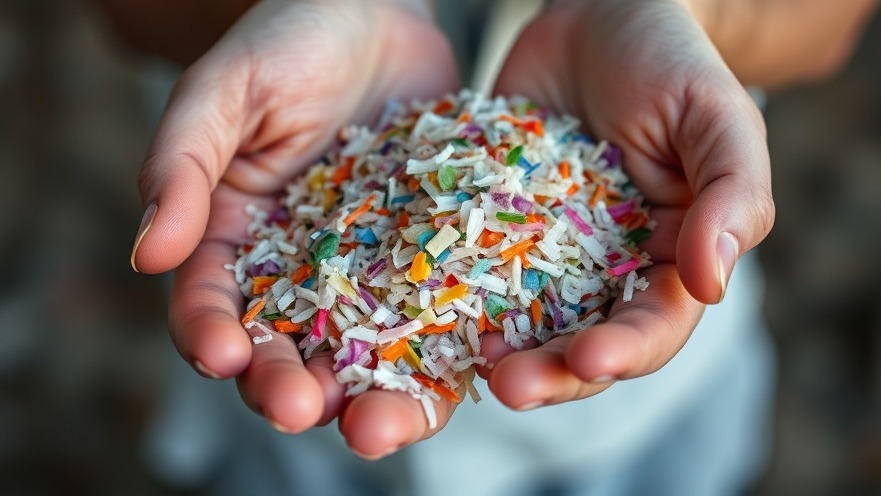
Understanding Microplastics: A Hidden Threat to Health
Microplastics are tiny plastic particles less than five millimeters in size, and their presence has become pervasive in our environment. From oceans to agricultural fields, these microscopic fragments are finding their way into our food and water supply, raising serious questions about their impact on human health. Recent studies suggest a potential link between microplastics and various health issues, including respiratory problems and inflammation. As we dive deeper into the conversation around microplastics, it is essential to explore how they could be affecting us and what we can do about it.
In 'Are Microplastics Making You Sick?', the discussion dives into the potential health threats posed by microplastics, illuminating insights that prompted this deeper analysis.
The Scope of the Problem: Microplastics in Our Everyday Lives
Microplastics are not merely a coastal issue; they infiltrate every aspect of modern life. They can be found in tap water, bottled beverages, and even foods, from sea salt to honey. This widespread contamination means that almost everyone is likely encountering them daily. Research has shown that these particles can accumulate in the human body, complicating our understanding of their long-term effects. The alarming reality is that while they break down from larger plastic items, microplastics may carry toxic chemicals that could jeopardize our health.
Health Implications: What We Know So Far
While scientists are still exploring the full extent of microplastics’ health impacts, some studies indicate that they may pose risks akin to other environmental pollutants. Potential effects include the exacerbation of allergies, respiratory issues, and even hormonal disruptions. Research has also suggested that the inflammatory response triggered by microplastics might lead to more significant health challenges over time. As these particles invade our systems, understanding risks becomes crucial for making informed lifestyle choices.
Practical Insight: How to Minimize Microplastic Exposure
Reducing microplastic exposure is not only necessary for individual health but can also promote a cleaner, more sustainable environment. Here are some actionable steps you can take:
Invest in Stainless Steel or Glass: Choose reusable containers and bottles instead of plastic ones to minimize your exposure.
Opt for Natural Fibers: When buying clothing, select options made of natural materials rather than synthetic fibers that shed microplastics in the laundry.
Filter Your Water: Installing a water filter can significantly reduce microplastics in the water you drink.
Support Sustainable Brands: Choose brands that prioritize eco-friendly packaging and products.
A Community Approach: Advocating for Change
While individual actions play a critical role in addressing the microplastics issue, community engagement can amplify the impact. Advocating for policies that regulate plastic waste, support cleaner production methods, and foster environmental sustainability can drive systemic change. Participating in local cleanups or supporting organizations that address plastic pollution can create a ripple effect, encouraging others to join the cause.
Conclusion: The Path Forward
As we navigate the complexities of microplastics and their implications, staying informed is key. Knowledge empowers us to make better choices that benefit both our health and the planet. By understanding how microplastics affect us and actively seeking solutions, we can take proactive steps toward a healthier lifestyle. Awareness and action are vital as we work together to combat this hidden threat. Let's be part of the solution—every small step counts on the journey toward a cleaner and healthier world.
 Add Row
Add Row  Add
Add 




Write A Comment